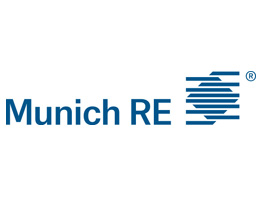4 Ways to Manage Medical Supply Chain Disruption in Workers’ Comp

The health care supply chain is experiencing a multitude of disruptions, delays, wage pressures and shortages, some of which have an impact on workers’ compensation medical care.
Shortages that are currently affecting the products and services needed for injured worker treatment include: portable and home-use oxygen; some basic medical supplies, such as gauze and bandages; walking aids, including crutches, canes, braces and wheelchairs; medical monitors such as blood pressure cups and glucose meters; and diagnostic/imaging equipment, such as ultrasound and MRI machines.
In addition, a dearth of home health aides is making it difficult, if not impossible, to arrange in-home care for patients in some parts of the country.
Workers’ comp medical program directors are seeing delays in treatment for their injured workers and higher costs, as a result of these shortages.
Kristine Kennedy, SVP of product strategy and innovation at Healthesystems, has a keen eye set on the ancillary medical benefits market. Looking at recent trends, she suggests the following four mitigation strategies designed to help workers’ comp medical program directors through such shortages.
Here’s a closer look at what Kennedy and Healthesystems have in play.
1) Network Depth and Breadth
“Many payers rely on a single vendor for some products and services, which is risky even without supply chain disruption,” Kennedy said.
“The ancillary benefits market is volatile with a lot of vendors coming and going, so it is important to have ready alternatives, especially when we are experiencing shortages of supplies and staff.”
2) Network Quality
“The quality of the network is every bit as important as its depth and breadth,” Kennedy said.

Kristine Kennedy, SVP, product strategy and innovation, Healthesystems
“It could be tempting to sign up with someone new who claims to have ample supplies of products or services, but vetting vendors and assuring that provider networks are reputable and reliable is more imporant than ever. This includes checking security protocols, professional credentials, references and performance over time to avoid data breaches, quality issues and even fraud.”
Kennedy went on to explain that quality assurance is ongoing.
“Things can and do change of course, so it is important to measure quality within the context of the current environment — and that includes comparing vendors to one another. That’s the best way to benchmark in a changing environment.”
For example, Kennedy added, Healthesystems continuously measures over one hundred unique factors within five general categories: clinical, cost, network management, operational and service management, and utlization management.
3) Referral Efficiency
Claims professionals who are tasked with sourcing supplies and services from individual providers, as opposed to using an integrated network of vendors, face a laborious and time consuming task, especially when items and services are harder to find.
In addition, when prices are fluctuating, as they have been recently, claims professionals may have no efficient process in place to check that the price they are getting is fair or is ultimately what gets billed.
“A cumbersome referral process will slow things down in the best of times. When products and services are in short supply, a manual process using single vendors will not only take considerably more time, but it will also cost more — sometimes a lot more,” Kennedy added.
4) Oversight & Analytics
“The right data presented in an easily digestible format can provide meaningful information and faciliate decision making,” said Kennedy.
“When viewed in aggregate, small details can reveal big insights and enable incremental adjustments that lead to big improvements.”
Here is where data visualization plays a key role, she said.
For example, a bar chart of monthly price savings over time could reveal an undesirable trend that might have gotten lost in spreadsheets or disparate vendor data. Capturing and analyzing data is especially important when supplies, prices and staffing are fluctuating more than usual.
What Can Be Done During Tumultuous Times
One thing’s certain: The COVID-19 pandemic has exposed and made worse weaknesses that already existed in the medical supply chain. Without corrective action, these vulnerabilities will continue to cause shortages and delays that could compromise care for injured workers.
But with these mitigation strategies on hand, comp professionals can stay ahead of such supply chain weaknesses.
“Workers’ compensation medical program directors can still get their patients the care they need and mitigate some of the bigger risks brought on by supply chain disruption,” Kennedy said.
“By forging connections with vendors and providers, payers can mitigate the negative effects of supply chain disruption and ensure appropriate care at manageable cost.” &











